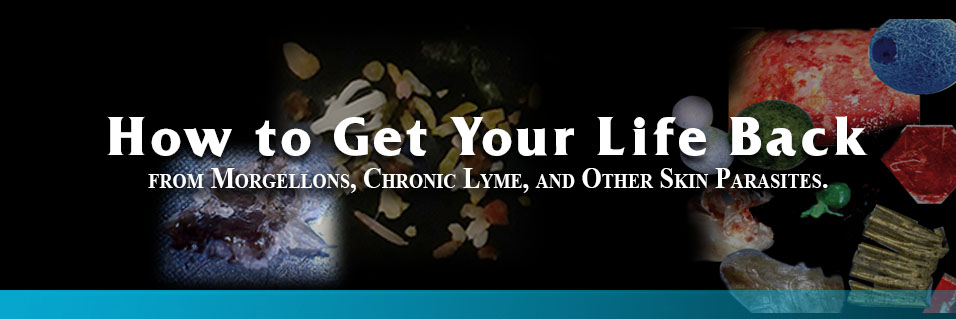From what I see in analyzing hundreds of questionnaires, rashes are not generally a part of either Morgellons or Collembola. There can be many different reasons for rashes--some of them just an inconvenience of a subcutaneous bacterial infection, and others much more serious. For example, the classic bullseye rash is often one of the first signs of Lyme disease. A few of the many possible causes of rashes include insect bites, eczema or psoriasis, lupus, scabies, cellulitis, chicken pox, measles, at least one form of cancer, and Strongyloides Stercoralis.
When it comes to the skin parasites of Morgellons Disease and Collembola, if rashes are present, it's important to consider Strongyloides Stercoralis as a possible co infection. Just like Babesia (protozoan infection) and Bartonella (bacterial infections) are often co-infections of Lyme disease, Strongyoides can be a co infection of Morgellons Disease and Collembola. Strongyloides is a nematode that has an interesting life cycle of both on and in the body. It is often transmitted from feces of infected organisms or from organisms that have been in contact with infected feces. For me, it was from a cloud of dust from a tree as I pulled a vine from the tree. That dust was from a nest that was home to an infected bird that had long ago left or died and the nest deteriorated over time to disintegrate as I dislodged the vine from the tree. Likewise, Strongyloides can be carried by mites of rats, birds, or any organism that was feeding or in contact with the feces of an infected animal.
Stongyloides can be dormant for years, but when it activates, one of more of the following seven symptoms are present; and it can be life threatening if not treated.
• itchy rashes on feet, buttocks and waist.
• upper abdominal pain or burning.
• diarrhea or alternating diarrhea and constipation.
• a cough.
• red hives near the anus.
• vomiting.
• weight loss since the beginning of your infection of skin parasites.
Of all the symptoms listed above, the only symptom I had was rashes which is why I suggest taking them seriously--especially if you have any of the other symptoms too. Strongyloides, unlike Morgellons Disease and Collembola, is recognized as a disease by the CDC and can be diagnosed and treated. Diagnosis can be by taking a stool sample if analyzed within 20 minutes of elimination or by a blood serum IgG, test of the blood from Quest Lab which, in my opinion, is the better way to go.
When I was infected 20 years ago, the treatment at that time was thiabendazole. Today, albendazole and ivermectin are the medications of choice per the following as they have less side effects.
Your doctor can have a blood sample sent to Quest labs for analysis. However, the biggest challenge is to get your doctor to take you seriously as Strongyloides is not indigenous to the U.S. Best is to have him search the internet for the symptoms of strongyloides as listed above and go that route and simply ask him to humor you and order the test.
|



